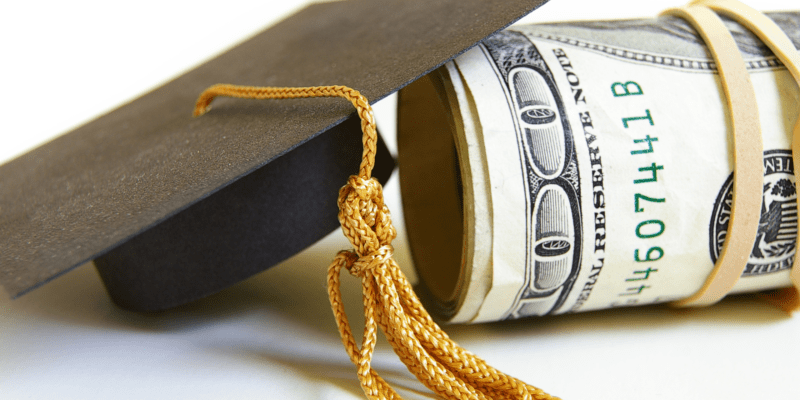Getting a good education can be very expensive. With all the fees you must pay to get the degree, student loans are becoming unavoidable for all students. While receiving scholarships and grants to pay for school is a good option, it doesn’t guarantee that you’ll receive enough to cover all of your expenses. You’ll likely still require some loan assistance to cover the cost of your college education.
Choosing the right student loan might make a major difference when the time to repay your college debt comes. Picking a loan with a low interest rate, various repayment alternatives, and borrower protections is an excellent strategy if you’re unclear about the kind of loan to select. It can be easy to get loan from some lenders if you know what to do.
By following these simple steps below, you’re likely to get the best student loans.
What are student loans?
Student loans are basically a type of financial aid. Like a car or home loan, a student loan requires you to compare your loan options before agreeing to the terms. The money you get can subsequently be used to pay for school-related costs like tuition, accommodation, books, and university fees.
In many circumstances, student loan repayment doesn’t have to begin until after you graduate. As a result, you may concentrate on your education without worrying about paying the debt.
Low interest rates are a feature of the best student loans for college. This implies that you can pay back the amount borrowed originally, with each payment.
Applying for a student loan is usually straightforward once you have all the required documents and have decided on the type of student loan you want. There are two basic kinds of student loans; federal student loans and private student loans.
Federal Student Loan vs. Private Student Loan: How do they differ?
You can get financial aid to pay for college from both private and public sources. The interest rates on federal student loans are often lower. Some federal loans don’t start charging interest until you’ve graduated. However, the government sets the amount of money you can borrow each year.
Regarding private student loans, every lender has different criteria for lending. Compared to federal student loans, some lenders offer greater cash to students. Nevertheless, private lenders often demand higher interest rates than the federal government because they take on greater risk by lending students larger amounts of money.
Guide to Getting the Best Loans
These tips will help you land the best student loan in the market. Keep in mind that prioritizing federal loans is advised. Generally speaking, you want to wait to take out private student loans until you have exhausted all federal loan, grant, and scholarship alternatives.
Check your eligibility for a federal loan
Before you can be qualified to get a federal loan, there are some requirements that you must have. The most important is being a citizen of America or an eligible non-citizen. You also need to have a valid social security number, high school certificates, and you must be accepted by the school you want to study in. A recognized accreditation agency must also accredit the college you choose to study in.
Once qualified for this loan, you can submit the Free Application for Federal Student Aid (FAFSA) form. After applying, you’ll receive the student aid report that tells you the type of federal aid you’re eligible for and how much you can get.
Compare the fees to be paid to the school with the amount you’re eligible for to help decide if the loan can cover your expenses. This will help you know if you need to apply for a private student loan to cover the remaining cost.
Choose the private loan with the best interest rate
You might need to take out private loans to cover the remaining fees if federal aid and family support are insufficient.
Compare personal loans from various lenders, such as banks, credit unions, and internet resources. As you consider your alternatives for payment deferment or forbearance if you experience financial difficulty, consider issues like fees, interest rates, and the length of the payback period.
Due to poor credit, most private student loan borrowers will need to apply with a co-signer. Your co-signer will be as liable for paying back your debt as you are. Find a private lender who provides co-signer release, which releases your co-signer after a specified number of payments.
Choose the best repayment plan
When it comes to repaying your student loans, the majority of private student loans give you three options. You can pay the principal and interest at once, pay the interest while you’re enrolled, or postpone paying the principal and interest until after you’ve graduated.
For starters, the longer you wait to repay, the higher your overall borrowing cost will be. Second, most lenders will offer you reduced rates if you don’t postpone payments. And last, if you make a small payment while you’re in school, some lenders might give you a slightly better rate.
Consider making interest-only payments if you cannot make the full amount while still in school. The interest rate for each kind of repayment plan may vary. When weighing your alternatives and before applying, take note of the differences.
Don’t miss out on the repayment incentives
Before applying, some lenders provide a rate decrease for existing clients.
Find out what kind of account might be eligible if neither you nor your cosigner is a client and a customer discount is offered. Opening a free checking account and applying for the loan can be all the lender required. Be sure to check for additional payback incentives in addition to those “automatic” discounts and consider them while making your choice.

